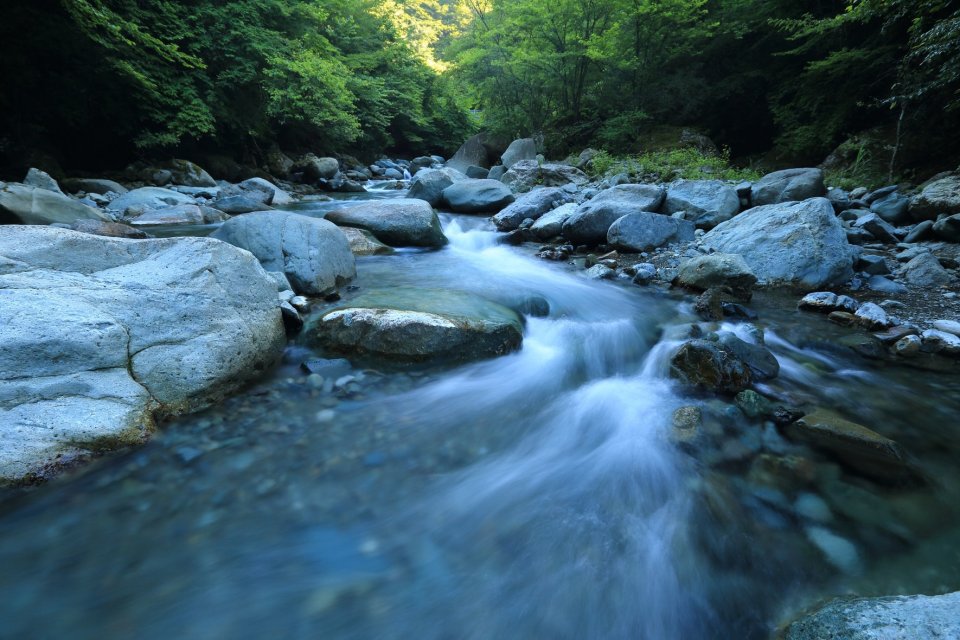
This study was conducted at Chongqing municipality, which is a mountain city in China. The river revetments are situated along the west bank of the Yangtze River in Southwest China. Chongqing is generally characterised by a subtropical monsoon climate with abundant rainfall.
This study aimed to use a semi-natural meadow as an ecological restoration tool for the optimisation of ecosystem services and landscape attractiveness of river revetments. River revetments combine bank reinforcement with greening and can resist flood washing and provide waterfront space for human activities; thus, it has become a key functional unit in riparian ecosystems used to foster ecosystem services such as the interception and filtration of polluted surface water, habitat for organisms and aesthetic beauty.
Herbaceous species that naturally occur in habitats with infrequent and periodic inundation were planted in hydrology-induced and disturbed revetments along the mainstream of the Yangtze River in the mountain city of Chongqing, China. The experimental meadow communities exhibited persistence under the constraints imposed, such as the extremely high soil wetness variability between periodical inundation on seedlings, the drought during the summer, and the transition between runoff washout and quick drainage.
Two different vegetation treatments were used: a meadow mix group and an untreated control group with existing vegetation. Each group covered an area with a 340-m width along the concrete grid revetment. The control group was left alone without receiving any maintenance during the study. Test beds in the meadow mix group were manually weeded regularly to suppress predominated ruderals
Six experimental plots without tree-canopy coverage were marked to enable vegetation monitoring, with 100 m of spacing between replicates. The six sample plots contained two groups, including the meadow mix and the control group, and each group had three plots. Each sample plot was determined vertically between the two pedestrian paths.
All planted species survived under the changing hydrological conditions, while the semi-natural meadow maintained good growth and visual landscape quality. Meadow mixes were significantly superior in species richness, abundance, and structural diversity over the existing homogeneous community dominated by invasive species.
Species richness increased by more than 60% in the meadow mix over the existing vegetation. The meadow communities resisted invasion by indigenous weeds and colonising species that spread through wind-dispersal and transport from the upstream catchment. And bank reinforcement resulted is reduced flood washing.
- Flood peak reduction
- Increase infiltration / Water storage
- Reduce drought risk
- Reduce flood risk
- Increase Biodiversity
When combined with the benefits that diverse planting will have on biodiversity, amenity, and runoff infiltration, the positive response outlined by this experiment provides strong motivation to prioritise semi-natural meadows in river revetments wherever possible. Knowledge of the plant assemblage presented here will also inform future landscape schemes. While this paper has focused on river revetments located in the Yangtze River, China, these principles are expected to be applicable to a broad range of vegetative revetment structures.
Semi-natural meadows showed adaptation in river revetments subjected to summer flooding, with the added complication of fluctuations between the washing-out by runoff and aggravated draining due to slope gradient and summer drought. Species-rich meadow communities are superior in abundance, species, and structural diversity over the control vegetation containing invasive ruderals. This work has also shown that once established at relatively high densities on filling soil in concrete frame revetments, meadow mixes can resist invasion by more productive colonising plant species.
This study was funded by the Young Scientists Fund of the National Natural Science Fund of China; the Fundamental Research Funds for the Central Universities; and the Open Foundation of the Chengdu Institute of Biology, Chinese Academy of Sciences.
Further information
- 13. Climate Action
- 15. Life On Land

